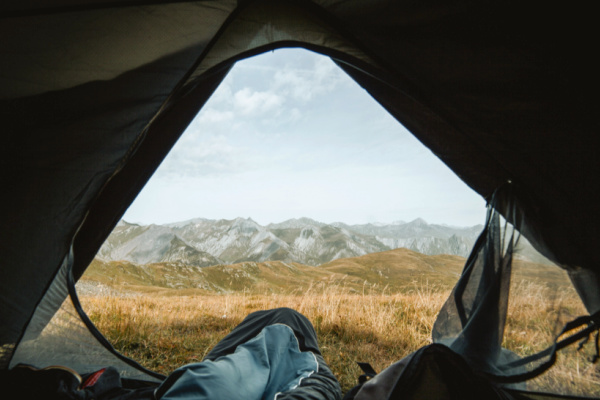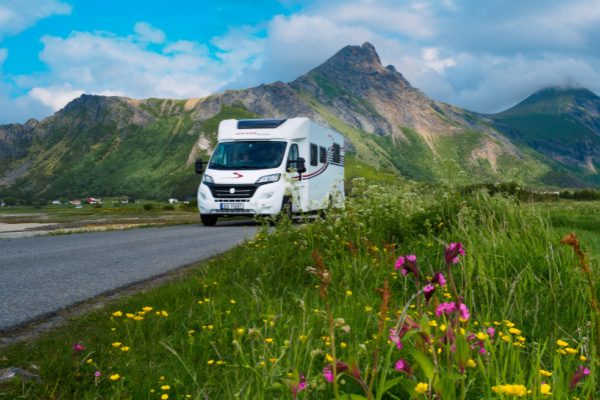What gas do I need to run a stove?
When it comes to camping, there are a whole host of different gas options available but the main two are whether you want to opt for a refillable gas cylinder or canister.
Refillable Gas Cylinders
Available in butane or propane and in a range of different sizes from the likes of Campingaz and Calor Gas. Most camping stoves can run from both of these brands and both types of gas (butane or propane) – it’s generally just down to the regulator you use.
Pierceable Gas Canister
Pierceable canisters are often the cheapest and lightest available, making them ideal for short-term camping trips and holidays. These gas canisters can only attach to specific stoves – they may be sold together – and once attached they cannot be removed until it is empty.
Threadable Gas Canister
Threadable canisters are a reusable option. Being lightweight and reusable, they are ideal for multiple camping trips. A threaded attachment point will fit with most stoves and can be self-sealed. Threadable canisters are commonly found at campsites and will often be a screw-on cylinder.
An alternative to a screw-on thread canister is a clip or click-on canister. Similar to a screw-on and resealable, with these canisters, the stove attaches itself to the valve by clipping onto it.
Resealable Gas Canister
Sometimes called ‘aerosol canisters’, these are cheaper than many other types of canister. Resealable canisters can be used with a bistro stove or other similarly styled stoves. Aerosol canisters can also be used to refill larger canisters. These canisters are lightweight and easy to use.
What to consider when buying a gas stove
When it comes to choosing a stove, you need to consider several points when making your decision.
Obviously, how you will be getting around is going to have an influence. If you are hiking – on an expedition or for DofE – your fuel and stove will be in your rucksack. Therefore, it will need to be lightweight and not take up too much space.
The weather and climate you are camping in will have a big influence. Cold weather and wind can seriously hamper how your stove works. Therefore, stoves that feature a windshield will help guard it against gusts while those made from a reflective material prevent heat loss.
Staying with reflective accessories, reflective base plates can prevent heat loss to cold ground and maintain a safe operating temperature.
Likewise, remember that if your canister gets too hot it can explode, so, you will need to provide ventilation to it in warm conditions.
The main point to consider when it comes to choosing a stove and fuel supply is the type of gas…
Which gas is best? Butane or propane gas?
Most camping gas stoves run off propane, butane or a mixture of the two gases. The key difference between the two is the temperature at which they operate – their boiling points.
Gas stoves are brilliant pieces of kit; however, at lower temperatures, they become more inefficient due to the liquified gas not evaporating properly. Therefore, you need a gas that has a lower boiling point if you are camping in colder climes.
Butane is a less toxic fuel than propane and is capable of providing around 12% more energy. However, its boiling point is 0°C, meaning it cannot operate in cold temperatures and can struggle from 5°C and below. While it can provide better value for money, if you’re camping in winter or cold climates, butane is not the gas of choice.
Propane is lighter, has a higher pressure and a lower boiling point than butane of -42°C. The higher pressure means propane burns hotter, reducing cooking times, while the lower boiling point means it performs better in lower temperatures.
You likely won’t be cooking in extreme temperatures on a UK camping trip, but propane is the choice for winter camping.
Alternatively, you can find stoves that run off a mixture of propane and butane. This combines the advantages of both, such as the higher efficiency of butane with the greater versatility of propane. For this reason, many camping canisters contain a mix of gases.
In some cases, you may find canisters containing isobutane. Isobutane shares the same formula and efficiency as normal butane but has higher pressure. Isobutane also has a boiling point of -12°C.
How to dispose of a gas canister
If you’re camping for a few days or even weeks, you could find that you need multiple gas canisters – which may mean getting rid of one.
Gas canisters can be recycled; however, you must ensure they are completely empty, and no fuel remains inside. Disposing of a canister is not as scary or dangerous as it may sound – it isn’t going to explode like a grenade.
Once the canister is empty, you need to pierce it with a sharp tool. This will ensure, and alert others, that the canisters are empty and safe. Just to be sure, you can also mark them, and the hole, with a pen. You should only do this with small camping gas canisters.
Camping stove and gas canister safety
Gas canisters contain compressed fuel, which is, naturally, very dangerous. So, here are some tips to stay safe when using a stove while camping.
- Check your gas before lighting as many fires start with faulty or damaged equipment. Your canisters could have become damaged while in your pack.
- Choose your location and don’t place your stove near the tent. Cook outside the tent in a well-ventilated space. You don’t want to have smoke in the tent or put it and yourself at risk of fire.
- Keep gas cylinders and flammable liquids away from any flames. This includes a spare canister – do not place it anywhere near a live stove or campfire.
- Keep matches and lighters away from children, make sure they’re away from the cooking area when the stove is lit.
- Make sure your stove is stable on level ground as you don’t want your stove to fall over in the middle of cooking. Not only could it ruin your meal, but it could lead to a fire.
Shop our entire range of camping stoves and cookers, as well as gas cylinders and canisters from leading brands, such as Kampa, Vango, Summit and Campingaz.









